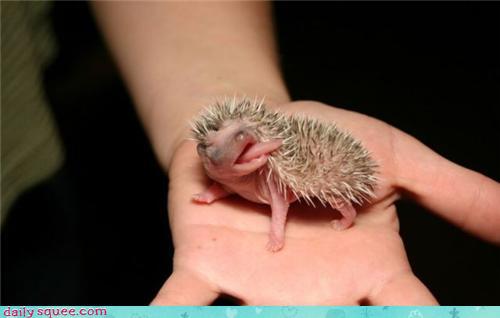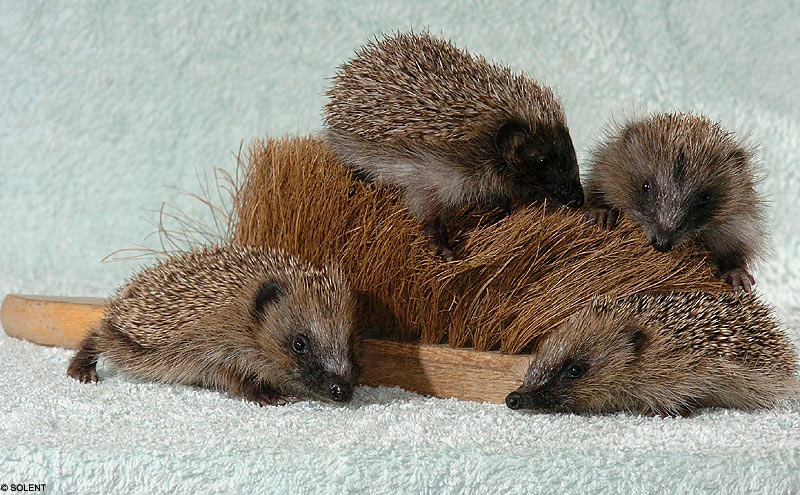| Jensi & Rachel | Hedgehogs | |
| CLASSIFICATION
|

CLASSIFICATION Most people recognize hedgehogs by their spines. A hedgehogs spines are actually stiff hollow hairs made of keratin. Their spines aren't barbed like a porcupine's and are difficult to remove, although a hedgehog's spines do come out when it sheds its baby spines to replace them with adult spines. This process is called 'quilling'. When a hedgehog discovers a strange smell or new taste, they perform something called 'self-anointing'. This involves the hedgehog suddenly frothing at the mouth, then distributing this foam over their quills. Given the shape of a hedgehogs body, the way they're able to contort themselves to reach most of their quills is surprising. Though scientists aren't entirely sure why the animal does this, it is thought that hedgehogs anoint themselves as protection against toxins. Hedgehogs are known to be highly resistant to toxins; this may explain why.
Hedgehogs can survive in several different habitats, but they are most commonly found in forests or on farmland. There are a few varieties which thrive in the desert, thanks to their long claws-used for digging- and large ears, used to keep cool. Because they eat many different garden pests and snakes, gardeners in the UK like keeping hedgehogs around with treats of dried cat food set out for them. Thanks to this, hedgehogs have become more common in areas inhabited by humans. Hedgehogs eat a variety of things.. They eat insects, snails, frogs and toads, caterpillars, worms, beetles, snakes, bird eggs, carrion, mushrooms, grass roots, berries, and a variety of melons. Some of a hedgehogs favorite foods are slugs and worms. Sometimes they will eat more than forty slugs in a night. Certain hedgehog species breed at different times of the year, but for the most part they mate in the spring like other mammals, and produce 4-6 hedgehoglets. The gestation period for hedgehogs ranges from 30 to 45 days, depending on the breed and health of the mother. The hoglets are born much like kittens; their eyes and ears are still closed. The babies have quills at birth, but they sit just beneath the skin and "sprout" in about 36 hours. Their eyes open after fourteen days, their teeth appear after 21 days, and weaning occurs at 6-7 weeks.
Hedgehogs have a body system similar to most other mammals. They excrete their nitrogen waste as urea, and like rats, males only have two openings. The quills of a hedgehog are actually a sort of modified fur, and the females produce milk for their young. Hedgehogs have the same problem as many other small mammals who live around humans. Cars are a great danger to them. Another common human caused problem is pesticides; when a hedgehog eats an insect who has been hit with this poison they usually form digestive problems and may even die. In2006, McDonald's altered the design of their McFlurry cups in order to make them more "hedgehog-friendly". Hedgehogs would sometimes get their heads stuck in the cup when they tried to lick the rest of the ice cream from inside the cup. Pet hedgehogs copy this same behavior by getting their head stuck inside any paper towel or toilet paper tubes left lying around and wandering around with the tube on their head. Owners often refer to this as "tubing" and encourage the cute habit by giving them clean tubes. Often, owners are generally kind enough to cut the tubes down the center to keep the hedgehog from being trapped against their will. Oddly enough though, some will still knowingly get themselves stuck for a few hours.
http://www.animalcorner.co.uk/britishwildlife/hedgehog.html http://en.wikipedia.org/wiki/European_Hedgehog http://www.faqs.org/faqs/hedgehog-faq/part5/section-2.html |
|

